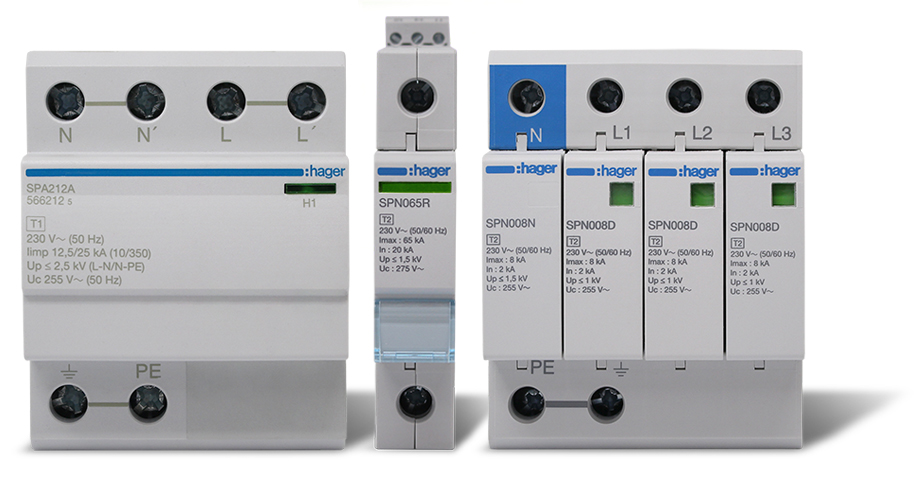Surges and The Dangers
The whole nature of how electrical equipment is used in homes and at work has evolved; with everyday activities relying on electronic equipment.
Products such as computers, printers, flat screen televisions, industrial control equipment such as PLC’s, alarms, microwaves and washing machines are common place. These can all be vulnerable to transient overvoltages, which can significantly reduce the equipment’s lifespan through degradation and damage.
A transient overvoltage or surge is a short duration increase in voltage measured between two or more conductors. In short this means anything from microseconds to a few milliseconds in duration.
Products such as computers, printers, flat screen televisions, industrial control equipment such as PLC’s, alarms, microwaves and washing machines are common place. These can all be vulnerable to transient overvoltages, which can significantly reduce the equipment’s lifespan through degradation and damage.
A transient overvoltage or surge is a short duration increase in voltage measured between two or more conductors. In short this means anything from microseconds to a few milliseconds in duration.
Surge Protection Devices (SPD's)
SPD’s protect electrical and electronic equipment against transients, originating from lightning, switching of transformers, lighting and motors. These transients can cause premature aging of equipment, downtime, or complete destruction of electronic components and materials.
SPDs are strongly recommended for installations that are exposed to transients, to protect sensitive and expensive electrical equipment such as TVs, washing machines, PCs, alarms etc.
SPDs are strongly recommended for installations that are exposed to transients, to protect sensitive and expensive electrical equipment such as TVs, washing machines, PCs, alarms etc.

Choice
The choice of SPD depends on a number
of criteria such as:
of criteria such as:
- The risk of lightning strikes
- The exposure of the building to transients
- The sensitivity and value of the electrical
equipment that requires protection
- Earthing system
- Level of protection
Selection Criteria
Surge protection devices are classified according
to their functions:
with a typical waveform 10/350 μs (Class I test). Usually employs spark gap technology.
to it. It usually employs metal oxide varistor (MOV)
technology and is characterised by an 8/20 μs current wave (Class II test)
to their functions:
- Type 1
with a typical waveform 10/350 μs (Class I test). Usually employs spark gap technology.
- Type 2
to it. It usually employs metal oxide varistor (MOV)
technology and is characterised by an 8/20 μs current wave (Class II test)
Terminology
Type - Surge protection devices are classified into types according to their discharge capacity. The term Class is also commonly used.
Iimp - Impulse current of 10/350 μs waveform
associated with Type 1 SPD’s
In - Surge current of 8/20 μs waveform
associated with Type 2 SPD’s
Up - The residual voltage that is measured across
the terminal of the SPD when In is applied
Uc - The maximum voltage which may be
continuously applied to the SPD without it conducting.
Cascading - describes the method of combining several levels of SPD’s to provide maximum safety in the surrounding installation
Iimp - Impulse current of 10/350 μs waveform
associated with Type 1 SPD’s
In - Surge current of 8/20 μs waveform
associated with Type 2 SPD’s
Up - The residual voltage that is measured across
the terminal of the SPD when In is applied
Uc - The maximum voltage which may be
continuously applied to the SPD without it conducting.
Cascading - describes the method of combining several levels of SPD’s to provide maximum safety in the surrounding installation
Quick Selection Guide
The following may assist in choosing whether SPD’s are required and the correct type of device:
If the answer is YES in the above to the first two questions, it is recommended to install a Type 1 SPD at the main switch board to prevent dangerous flashover. This will provide protection against surges caused by direct lightning strikes.
If the answer is YES to the third question or there is a Type 1 SPD in the installation, then it is recommended to install a coordinated set of Type 2 devices in the distribution board to provide protection against transient over-voltages caused by indirect lightning strikes or by switching events.
- Does the installation contain a lightning protection system?
- Is the installation adjacent to any tall structure, tall trees or near a hill top in a lightning prone area?
- Does the installation contain equipment where higher reliability from over-voltages is required?
If the answer is YES in the above to the first two questions, it is recommended to install a Type 1 SPD at the main switch board to prevent dangerous flashover. This will provide protection against surges caused by direct lightning strikes.
If the answer is YES to the third question or there is a Type 1 SPD in the installation, then it is recommended to install a coordinated set of Type 2 devices in the distribution board to provide protection against transient over-voltages caused by indirect lightning strikes or by switching events.
Add surge to your quote
Surge Protection may not be the easiest to digest, but we have created a flyer to make the fundamentals of SPDs easier. This flyer can be shared with your clients as part of your quote to help explain the benefit of diverting the transients at the source.